Enjoy the scenery while opening a window
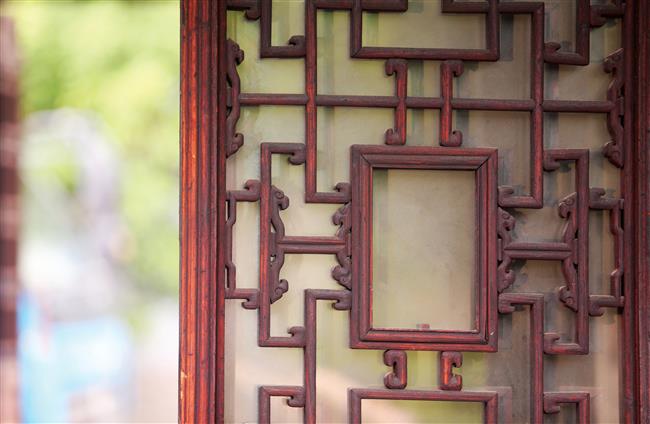
A hollowed window at Hanchun Hall in Jiading New Town
In ancient times, people paid special attention to the style, decoration and function of windows, particularly in areas in the lower reaches of the Yangtze River where the architectural style is renowned as “poetic.”
Xie Lingyun, one of the foremost Chinese poets of the Southern and Northern dynasties (AD 386-589), once wrote: “Displaying overlapping cliffs in the courtyard and presenting a still lake in front of the window,” confirming windows as not just openings in a wall but with more artistic and cultural connotations.
Jiading is a museum of old houses, and the windows in the district’s traditional architecture have evolved along with the local culture, developing from simplicity to complexity. During the period, a variety of decorative processes were developed, displaying various elements and styles.
They possess the exclusive characteristics of Jiading and have become an icon of the evolution of Jiading’s social life and folk culture.
The original windows were openings on a rooftop. They had three functions — letting the smoke out, providing ventilation and helping light the room below.
It was not until the Han Dynasty (202 BC—AD 220) that mullioned windows took shape. After thousands of years of evolution, all kinds of windows have been formed.
The traditional houses in Jiading were made of wood and brick. Hence, windows were made of wood, too.
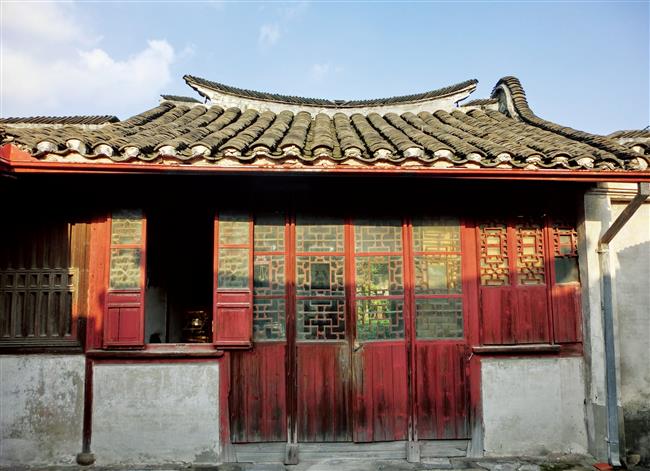
The tall windows flanked by short windows at Zhu’s House in Zhuqiao area
At the same time, because traditional houses are load-bearing with a wooden structure, the windows were made randomly. But there were still some rules to follow. First of all is symmetry. Most of the windows are paired and there are very few singular ones. The number and size of the windows depend on the scale of the house.
Windows in Jiading are usually in several categories — long, short, mullioned and glass-made. The high and short windows are most commonly seen. Usually each room has six such windows. Every one of them is exquisitely ornamented, with the pattern of flowers or rectangular spirals.
The ornamentation is on the inward side of the windows which reflects the low-profile character of Jiadingers.
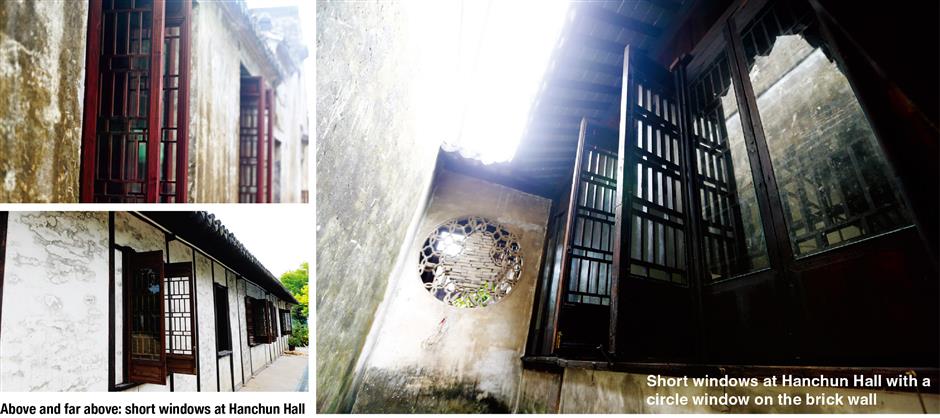
Among the traditional houses, Hanchun Hall in Dayu Village in Jiading New Town has the most varieties of existing traditional windows. Covering an area of 350 square meters, the house was built by Wang family in the late Qing Dynasty (1644-1911).
A family of doctors, the Wangs shared a reputation in Jiading. Their house is the only existing century-old residence in Jiading New Town. The living room of the house has eight floor-to-ceiling windows.
The window frames are decorated with flower patterns and reishi mushrooms. The side rooms of the house are equipped with short windows while awning windows decorated with a rectangular spirals pattern were installed along the alleys.
There are also round windows on the wall beside the corridor. They have the practicality of ventilation, are moisture-proof and add elegance to the house.
Mullioned windows are next to the stove in the kitchen. This is consistent with the ancient lifestyle of “bright kitchen but dark room.”
Tall window
Tall windows or floor-to-ceiling windows are a must-have in a traditional Chinese house. The number of tall windows adopted is usually four, six or eight, depending on the scale of a house. Tall windows are mainly used in a living room, hall or pavilion. The tall windows in Jiading are mainly made of wood boards. The upper part of a high window is usually a hollow board with lattice-shaped frame. In ancient times, carpenters would cover the board with flattened oyster shells. While playing the role of lighting and ventilation, it could also protect privacy. The lower part is wood boards, sometimes the inward side is decorated with various patterns. A tall window opens outward if there is no external corridor or otherwise open inward.
Short window
Short window or semi window is on a wall or on a wooden fence. Short windows are mainly divided into two types — boarded window or latticed window. A boarded window is made of wooden boards and usually without decoration. When it is closed, the room is pitch black. A latticed window is often decorated with little patterns and opened outward.
Mullioned window

A mullioned window at Yuan’s House in Loutang area
In window design, a mullion is a vertical divider that breaks apart the opening. A mullioned window is fixed on a wall. The mullion also works as a pivot for the opening and closing of the window. Mullioned windows are mainly used in bedrooms or kitchen as they can be opened or closed very quickly and provide a perfect design solution for privacy protection because of their narrow opening.
Circle window
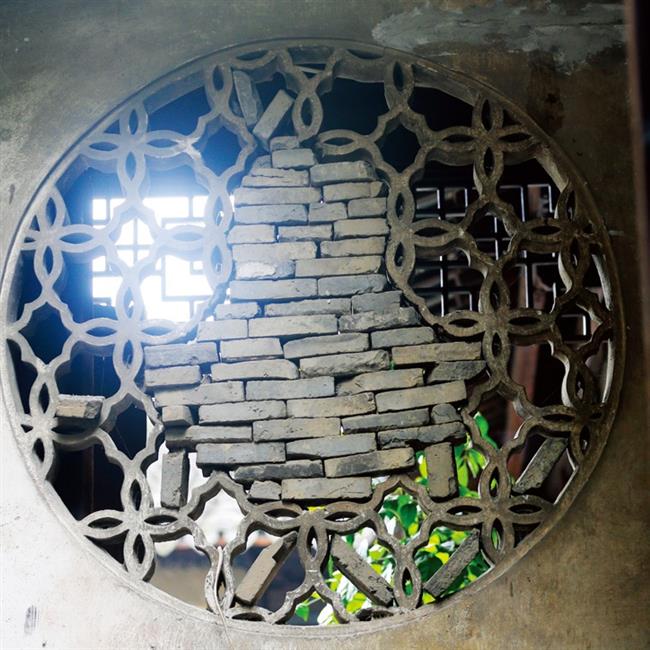
A circle window at Hanchun Hall
Circle windows or round windows have a circular shape but not all of them are a perfect circle. Lumped into this category are quarter round, half round, elliptical, chord and oval windows. They can come with grilles and decorative frames. Fixed, rather than operable, the portholes offer a wonderful opportunity for people to enjoy the view outside.
Glass window
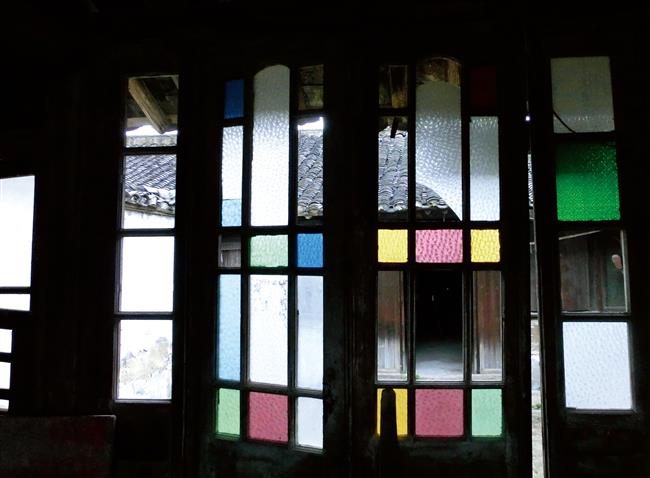
The colored glass window at Mao’s House in Anting Town
From early last century, glass windows are more popular in Jiading. Some well-off families equipped their houses with stained glass windows as the owners were deeply influenced by Western culture.
















